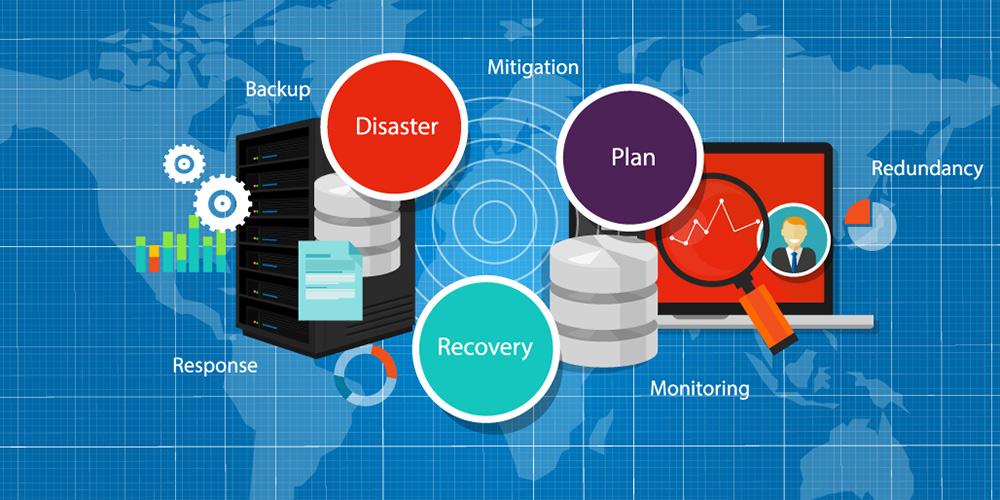
The Importance of Data Protection in Business Continuity and Disaster Recovery
In the last week, two earthquakes have shaken southern California, alerting us to the need to have our businesses prepared for a disaster, whether natural or manmade. Not only can fires, floods and earthquakes cause business interruptions, but so can systems failures, human error, malware and ransomware attacks.

Consider Unified Communications for Your Business
Imagine being able to integrate business class phone systems, collaboration and virtual meetings and your contact call center all within a secure and reliable unified communications suite. This means you can work anywhere, get customer information instantly and route calls efficiently to communicate in real time all over the world. Increasingly, Unified Communications can integrate your office communications and help you help customers.

Staying Secure and Compliant After Windows End of Life (EOL)
In less than a year, support for Windows 7 will be ended, making operation systems patches and updates unavailable, according to a 2018 article. Since this will impact cybersecurity as well as compliance. Many companies are migrating to a new operating system.

Cybersecurity Risks and Preventive Action
Even with so much information available about how to protect your network and business from data breaches and cyber attacks, a surprising number of businesses aren’t prepared. Read on to learn about how to make your company an exception.

Consider Software as a Service (SaaS) as Part of Your Business Model
Imagine if your business had a cost-effective and flexible way of accessing data, applications, and unified communications, without the maintenance and management of on-premise equipment. Read on to learn more about benefits and considerations of this service delivery model.

How Much Downtime Can You Survive Without a Business Continuity and Disaster Recovery Plan?
With disasters–natural and manmade–in the news, preparedness in the form of a business continuity plan is vital. Disaster recovery, or the ability of a business to continue running during and after a disaster, is a key part of business continuity. Read on to learn more about developing a plan to keep your business operating even when things go wrong.

The Importance of a Business Continuity Plan
With some parts of the country heading into tornado season, and with natural and man-made disasters a possibility anywhere, there’s no time like now to consider how to keep your business running in the event of a flood, fire, earthquake, or even a cyber attack. A Business Continuity (BC) plan keeps your business running both during and after a disaster, minimizing downtime and the resulting loss of revenue and reputation. Read on to learn more about what such a plan can mean for your business.

Keep Your Network in Compliance, and Healthy Too
A company’s network is the backbone of its IT infrastructure, depended upon for connection to customers, potential customers, vendors and employees, as well as public and private cloud infrastructure. Not only that, your network’s health is one of your best defenses against cyber threats. However, to stay healthy and in compliance with standards and regulations, you need to be proactive. Read on to find out how to keep your network in good health and compliance.

The Importance of Data Protection
Cyber attacks and data breaches are regularly in the news, and often come with a loss or exposure of customers’ data and a loss of reputation to the business. Large, well-known businesses are often in the headlines; small to medium-size businesses, however, are just as much at risk. Knowledge of cybersecurity practices has yet to keep up with new threats. According to CompTIA’s 2018 Trends in Cybersecurity report, “Businesses with fewer than 100 employees are far more likely than their larger counterparts to feel that their IT security is simply adequate or unsatisfactory. Without a deep resource pool to lean on, smaller firms struggle to address new facets of IT security.” To learn more about protecting your data, read on.

Make Your Employees Your First Line of Defense in Cybersecurity
Imagine that your employees could be your strongest defense against cyber attacks, rather than a potential area of weakness. According to a CompTIA 2019 industry trends report, in all the innovation taking place, cybersecurity is an enduring concern. Other statistics indicate that user error contributes to nearly 25% of cyber breaches. Read on to learn more about how to train your employees to be your greatest defense against cyber attacks.
